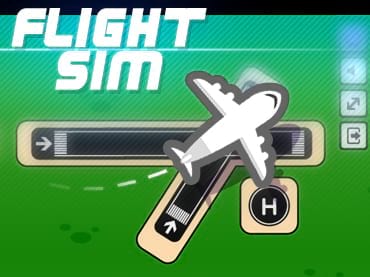Contents
Introduction
Flight sim games have long been a favorite among gaming enthusiasts and aviation aficionados. These virtual experiences allow players to step into the cockpit of various aircraft, from small propeller planes to massive commercial airliners. Whether you’re a novice seeking the thrill of flying or an experienced pilot honing your skills, it offers a unique and captivating gaming experience. In this article, we’ll explore the world of flight simulator games, delving into their history, realism, and appeal to aviation enthusiasts and gamers alike.
A Brief History of Flight Sim
It can be traced back to the early 1900s when primitive devices were created to train military pilots. However, it wasn’t until 1982 when “Microsoft Flight Sim” was introduced that gamers were able to experience the thrill of flying in a truly realistic and immersive virtual world. This groundbreaking title revolutionized the gaming industry by providing a highly detailed and accurate simulation of real-world flying, complete with realistic weather patterns, aircraft models, and flight physics. With its advanced graphics and unparalleled attention to detail, “Microsoft Flight Sim” set a new standard for flight simulator games that is still appreciated and celebrated by aviation enthusiasts today.

These games have come a long way since their inception. With advancements in technology, these games have transformed from basic 2D simulations of aircraft into highly detailed and immersive 3D environments that closely mimic the experience of flying. From the intricate physics engines to the visually stunning graphics, modern flight simulators offer an unparalleled level of realism, allowing players to truly feel like they are soaring through the skies.
A Key Component
One of the primary reasons for the enduring popularity of these games is their dedication to realism. These games strive to recreate the experience of flying as accurately as possible, taking into account various factors that affect aircraft behavior, including:
- Physics: Flight simulators simulate the laws of aerodynamics, gravity, and weather conditions, creating an authentic flight experience. This attention to detail allows players to understand and appreciate the complexities of aviation.
- Aircraft Systems: Flight simulator games often feature realistic representations of aircraft systems, including engines, avionics, and flight controls. Players can learn how to start, operate, and navigate different types of aircraft, enhancing their understanding of aviation.
- Weather: Realistic weather patterns and conditions play a significant role in flight simulators. Players must contend with turbulence, wind shear, and adverse weather, making each flight unique and challenging.
- Air Traffic Control: Some flight simulators include a virtual air traffic control system, adding an extra layer of realism and complexity to the gaming experience. Players must communicate with ATC and follow instructions just as real pilots do.
The Appeal of Flight Sim Games
- Learning and Skill Development: Flight simulators provide an excellent platform for learning about aviation and developing piloting skills. They can serve as valuable training tools for aspiring pilots and aviation enthusiasts.
- Exploration: Flight simulator games often feature vast, open worlds with meticulously recreated landscapes, cities, and landmarks. This allows players to explore the world from a unique perspective, whether it’s flying over their hometown or embarking on virtual world tours.
- Challenge and Mastery: Flight simulator games offer a satisfying learning curve. As players progress, they master the art of flying, from takeoff to landing. The sense of accomplishment that comes with completing a challenging flight is immensely rewarding.
- Community and Multiplayer: Many flight simulator games support multiplayer modes, enabling players to connect with others from around the globe. This fosters a sense of community among aviation enthusiasts, who can share their experiences, tips, and flight plans.
Conclusion
These games are more than just games; they are immersive experiences that offer players a chance to explore the skies, learn about aviation, and master the art of flying. With their dedication to realism and attention to detail, these games provide a unique blend of entertainment and education. Whether you’re a casual gamer or an aspiring pilot, flight simulator games offer an exhilarating journey into the world of aviation, allowing you to soar to new heights from the comfort of your own home.
